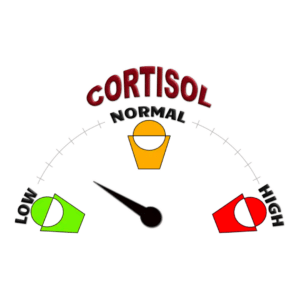Does it suddenly appear to you that many of your family members and friends are aligning themselves with a particular food tribe – a community of people who share a similar food philosophy be it Intermittent Fasting, Vegan, Vegetarian, Gluten Free, Keto, Paleo, Low Carb or High Protein? Are you encouraged to follow suit? If it does, and you feel inclined to join in, you are more than likely aged between 18 and 34 and this is not your imagination1. As my career branches off into a new direction, I have been researching the rising trend towards food tribes: who is behind them and why?

According to the findings of the International Food Information Council (IFIC) released in May 2018 food tribes are on the rise1. Compared to the same time the year before, the percentage of American adults following a specific food tribe increased from 14% to 36%1. Altogether about 16% were eating low-carb in some way and younger people appear to be accelerating this trend. Those aged between 18 and 34 (45%) were much more likely to be part of a food tribe than the number across all age groups, and adults 60 and older were significantly less likely1. These younger people put more trust in technology-based information such as lifestyle apps, blogs and social media influencers, than the more traditional one-size fits all approaches2. It seems the more a certain diet appears in the media, the more younger people talk about it and the more likely they are to try it. Most of them don’t read scientific papers or consult with nutrition experts. Instead they follow trends dictated by social media feeds2. Bloggers, on-line communities and social media influencers are promoting the wellness movement. Online health and nutrition information seeking is a common phenomenon. A national survey in the US reported that nearly 60% of all adults accessed health information online with over ¼ accessing it through social media2.
Nearly 32% of US adults share their perceptions and knowledge of health online and 9% of social media users had started or joined a health-related group2.

For generations, when people sat down for dinner they expected to see more or less of the same food on their plate: meat, potato, vegetable, and bread. These days what you’ll see on any individual plate varies depending on how eaters define their food ideology. Today popular eating styles differ and it is not unusual for differences to exist within the same family. Sometimes that coexistence is harmonious and other times not. The clash between hard-core Veganism and Paleo has escalated and very often is emotionally charged. This is because eating is a personal act and food choices are not only dictated by social, cultural and religious traditions but also ethical and environmental concerns and nutritional principles. The social aspects of diets are nothing new. They have always been an essential part of certain spiritual, religious and other cultural practices. The ethical, environmental and nutritional aspects are quickly evolving as younger people begin to take responsibility for their health and environment. As people suffer more chronic and debilitating diseases than ever before, the quest for optimal health and weight is driving younger people to take responsibility for their health and make what they consider to be healthy food choices. They are turning into their own health advisers, realising that the best diet is the one they can stick to and that although quick-fix fad diets may work in the short term, long-term they can’t be sustained. To manage their weight and feel their best, they are seeking an approach that allows them to tailor their eating habits to align with their personal food values and attitudes about health. They are opting for a protocol that suits their particular needs and preferences, and affiliating with an appropriate food tribe.

Food tribes serve as an inspiration to those who are looking for improved health but don’t know how to find it, and also an ability to connect with other individuals who are following similar plans. Younger people are attracted to this approach because it allows them to feel accountable and gives them a sense of community and support that was previously unattainable. There is so much contradictory information about what foods consumers should eat and avoid that many are becoming sceptical and angry3. In some, this scepticism induces a sense of inaction and avoidance of all guidelines or a backlash, which can potentially deter intentions to adopt healthy lifestyle behaviours3. In others, it promotes an active search for “truth” or looking for information from sources perceived to be neutral and free from hidden agendas, and a more simplified nutrition message4,5. These people are seeking food that makes them feel as good as their taste buds, even if it’s more expensive, and are increasingly turning towards alternative diets from Veganism/Vegetarianism and Paleo to Low FODMAP and Keto. According to the Australian Institute of Food Science and Technology (AIFST) lower sugar content and greater plant-based consumption are leading the health–food bandwagon6. Shoppers are increasingly looking for additive-free and many are reading the ingredients6. Health foods are moving from “niche” to mainstream and “free from” is growing as more consumers avoid dairy, sugar, gluten and wheat6. Technology is dictating transparency across the food chain as people crave a deeper understanding of what they are eating6. They want to learn more about the origins of their food and its entire journey from farm to fork – how their food is produced, where it comes from and the quality of its ingredients. They also have wider questions about environmental sustainability and many are seeking brands that align with their social values.

As younger adults look for healthier diets, there is an appreciation that this means different things to different people and a lot more than just objectively picking out the right amount of nutrients. Some people see healthy eating as maintaining a diet in which unnecessary additives are excluded and for others healthy food is something that is cooked at home together with one’s family. But for many younger adults today a healthy diet also seems to constitute a search for values and a lifestyle that portrays to others their identity and belonging, and that is largely why food tribes are on the rise.
References
- International Food Information Council Foundation. 2018 Food and Health Survey. May3, 2018
- Fox S. The social life of health information 2011. Pew Research Centre: Internet, Science and Tech 2011 cited 9 November 2015.
- Nagler RH. Adverse outcomes associated with media exposure to contradictory nutrition messages. J Health Commun 2014 19(1): 24-40.
- Goldberg JP, Silva SA. Communicating actionable nutrition messages: challenges and opportunities.Proc Nutr Soc 2011 Feb70(1): 26-37).
- Vardeman JE, Aldoory L. A qualitative study of how women make meaning of contradictory media messages about the risks of eating fish. Health Commun 2008 23(3) 282-291).
Australian Institute of Food Science and Technology https://www.aifst.asn.au








